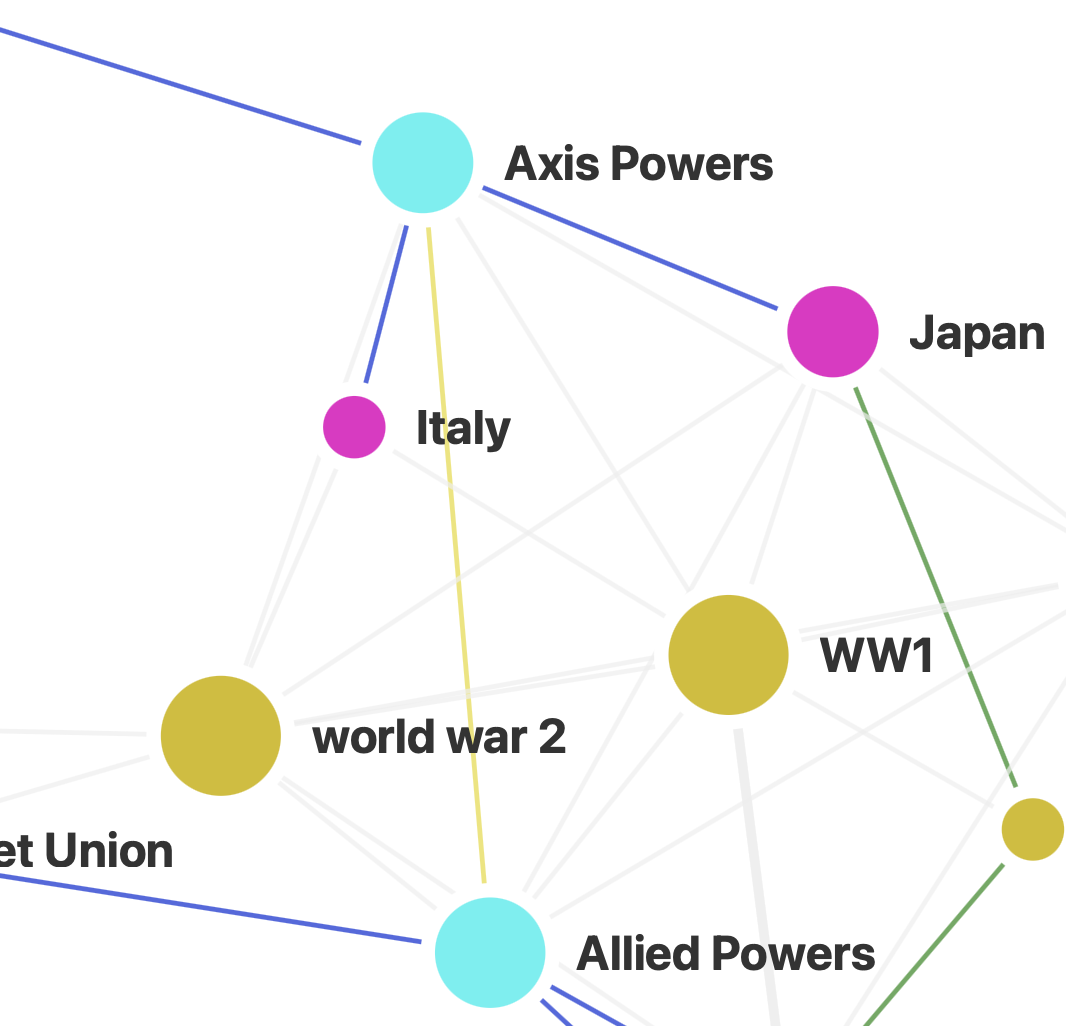
Should I choose this template?
Are your students struggling to differentiate which parts of historical fiction are real and which were created by the author? The Fact and Fiction network template supports students reading historical fiction by:
- helping students to determine which elements of plot are factual from history and which are elements of fiction that are added for the sake of the storyline.
- examining characters, events, and locations for their potential historical contexts.
Teachers suggested this type of network be created because students routinely struggled to differentiate between fact and fiction and this impacted their reading comprehension, making connections between ELA and history standards, and understanding of historical events.
When should I use this template?
When they read historical fiction, students can get confused about which story elements (plots, setting, characters) are historical events and which are part of the fictional plot. This network helps them identify the differences.
What sources work best?
Historical fiction novels, passages, or short stories
What’s the investment in time and effort for this network?
Time: This network could be used for one class period or on an ongoing basis while reading a novel over the course of a few weeks.
Teacher support: Teachers will need to
- understand the basics of Net.Create (node and edge entry). See this basic-data-entry video!
- how to toggle between network view and table view and sort columns in table view.
- how to use one network filter (the “?????” filter). See this ?????-filter video!
How should I use this template?
Network Details: What should my students and I be tracking?
The big things are nodes (things) and edges (relationships between things), which will also have “attributes” (which include mandatory info like citations and optional info like extra notes).
Nodes (things being connected)
In this network, the nodes represent people, places, things, and events that happened in history and/or happen within the historical fiction book.
In this network, the “fact/fiction” attribute, which is required for each node/edge entry, is as important as the node and edge types.
- Person or Group: A person or group of people (real or fictional) including whether the person or group is in the book being read. Students should add themselves as this type of node. For example, when reading the book The Book Thief, a person node might be Liesel (the fictional main character of the book) or Adolf Hitler.
- Thing: A thing or object that plays a significant role in the book or in history including whether the thing is in the book being read. For example, when reading the book The Book Thief, a thing node might be “The Word Shaker” (a made-up book) or Mein Kampf (a real book), both of which are referenced in The Book Thief.
- Event: A significant event (real or fictional) including whether the event is in the book being read. For example, when reading the book The Book Thief, an event node might be “Book Burnings”.
- Place: A significant place (real or fictional) including whether the place is in the book being read. For example, when reading the book The Book Thief, a Place node might be Molching, Germany (the fictional town where Leisel lives) or Auschwitz (a real place).
Edges (connection types)
In this network, the edges show connections between the people, places, things, and events that are the nodes. This includes noting when someone participated in something, was aware of something, or when two things are associated with each other.
- Participated in: You would use “Participated in” to connect a node (likely a person or group) to something they participated in (likely an event or group). For example, in a network about The Book Thief, there might be an edge showing “Leisel” - “participated in” - “League of German Girls”.
- Associated with: You would use “Associated with” to connect a node to something it is associated with. For example, there might be an edge showing “Adolf Hitler” - “Associated with” - “Mein Kampf”.
- Aware of: You would use “Aware of” to connect a node (likely a person or group) to something it knows exists. For example, a student might connect themselves to something they know about from history class.
What learning goals does this template support?
- CCSS.ELA-Literacy.RL.8.1: Cite the textual evidence that most strongly supports an analysis of what the text says explicitly as well as inferences drawn from the text.
- CCSS.ELA-Literacy.RL.8.3: Analyze how particular lines of dialogue or incidents in a story or drama propel the action, reveal aspects of a character, or provoke a decision.
What data literacy outcomes does this template support?
- Data is relational, and hierarchical. Students will cite the textual evidence that most strongly supports an analysis of what the text says explicitly as well as inferences drawn from the text, including identifying internal conflicts in the data collected from different kinds of historical sources.
- Data is interpreted, and we can even create it. Students will choose specific character traits and quotes from primary sources and enter them into a network, allowing them to explore their and their peer’s interpretation of historical figures’ traits in the context of both the original narrative and the data their peers entered. Creating the network themselves can help them appreciate that all visualizations are created by someone with ideas, interests, and biases.
This is also a good opportunity to explore:
- Data can be messy. As we create our data, we may disagree, which impacts interpretation. We need to figure out how to resolve and interpret that.
Teacher Resources
- Classroom management recommendations
- Network-analysis learning Resources
- Simple Net.Create documentation
- Videos of new node/edge, table sorting, filters, etc.
- 5-moves-to-make video
- 1-pager lesson plan
- “Good questions to ask” guide for teachers
- What network-data moves (viz, tables, filters) to use as network gets big
Student Handouts
- “Good questions to ask” guide for teachers

More about this item
Dublin Core
